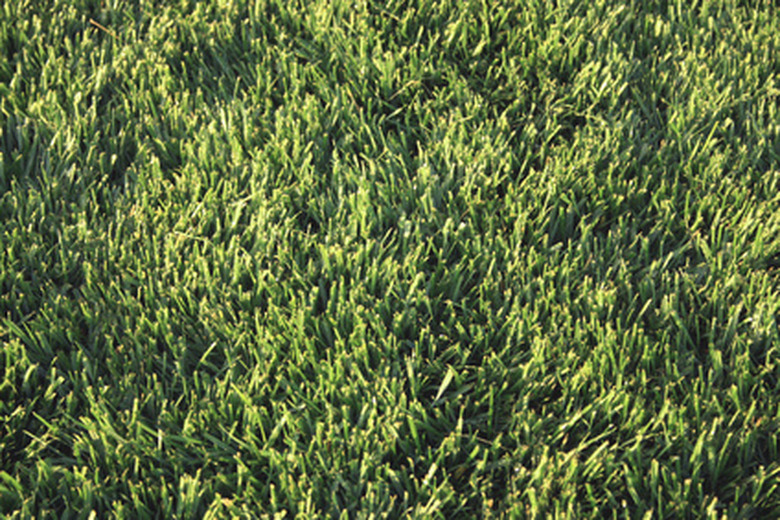The Best Fertilizers For Floratam St. Augustine Grass
Floratam is a coarse-blade hybrid of St. Augustine grass bred to be resistant to cinch bugs and some viruses. It is a fast-growing, warm-season grass that requires at least six hours of sun each day and spreads by aggressive spreading stolons. According to Texas A&M University, floratam stolons can produce up to 3/4 inch of lateral growth in a single 24-hour period. Like most turf grass, it is a heavy feeder, and should be fertilized anywhere from two to six times each year from spring through fall, depending on your age of lawn, soil conditions, lawn performance and products used.
New Lawns
New floratam lawns have a very high requirement for fertilizer. Two weeks after planting, apply a complete slow-release fertilizer formula with a guaranteed analysis of 19-5-9. Apply according to the product label dosing directions but do not exceed a rate of 8 pounds for every 1,000 square feet. Water the fertilizer in well until the top few inches of soil is drenched and the granules have settled on the soil surface between the blades. Repeat this application once every six to eight weeks until the lawn is rooted in and well established, up to six months from planting.
- Floratam is a coarse-blade hybrid of St. Augustine grass bred to be resistant to cinch bugs and some viruses.
- Like most turf grass, it is a heavy feeder, and should be fertilized anywhere from two to six times each year from spring through fall, depending on your age of lawn, soil conditions, lawn performance and products used.
Established Lawns
Established lawns benefit from a lower-nitrogen fertilizer formula than new lawns. The basic fertilizer used for the bulk of the year should have a guaranteed analysis of either 15-0-15 or 15-2-15. The middle number accounts for phosphorus, which most soils have enough of to support floratam. If you have phosphorous deficient soil, as identified in a soil test, then find a fertilizer with the higher middle number, 2.
Winterizer Fertilizer
Floratam grass, though a hybrid of common St. Augustine, does not carry the same cold tolerance. Switching to a lawn winterizer fertilizer in the fall will condition and help the grass to cope with winter elements more readily. Look for a product labeled as a winterizer fertilizer with a guaranteed analysis of either 3-1-2 or 4-1-2. Apply according to the label dosing directions in October, each year.
- Established lawns benefit from a lower-nitrogen fertilizer formula than new lawns.
- The basic fertilizer used for the bulk of the year should have a guaranteed analysis of either 15-0-15 or 15-2-15.
